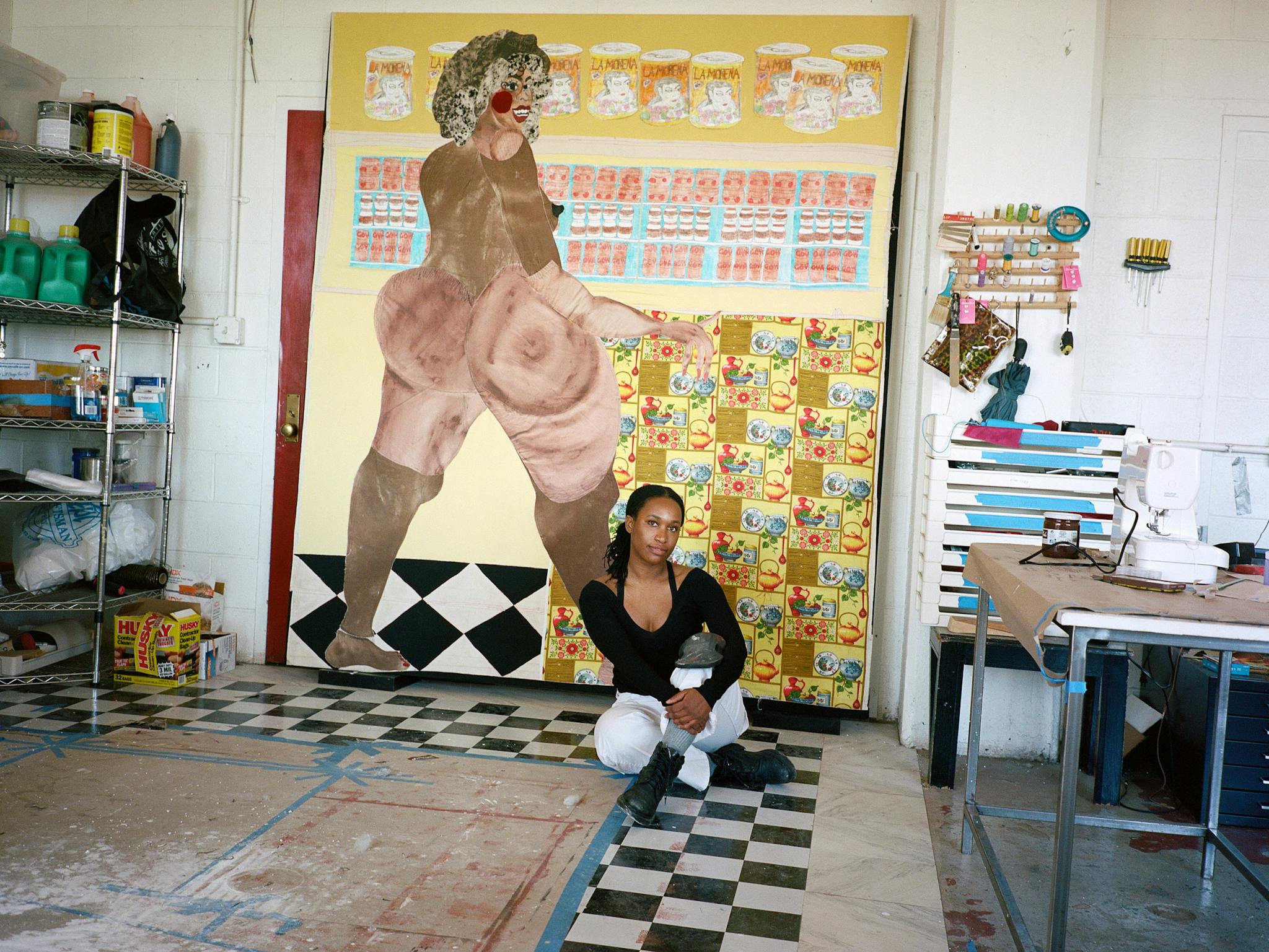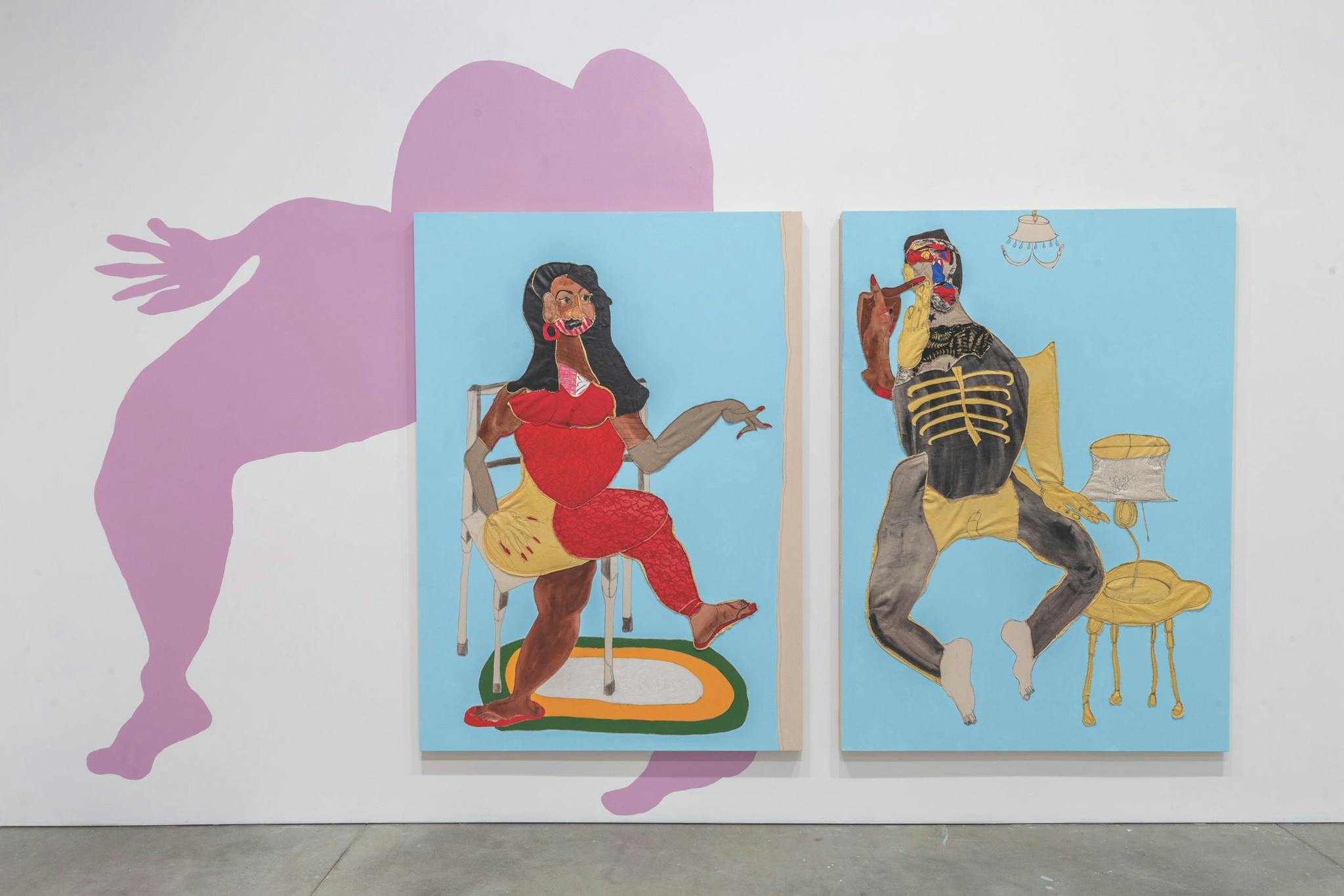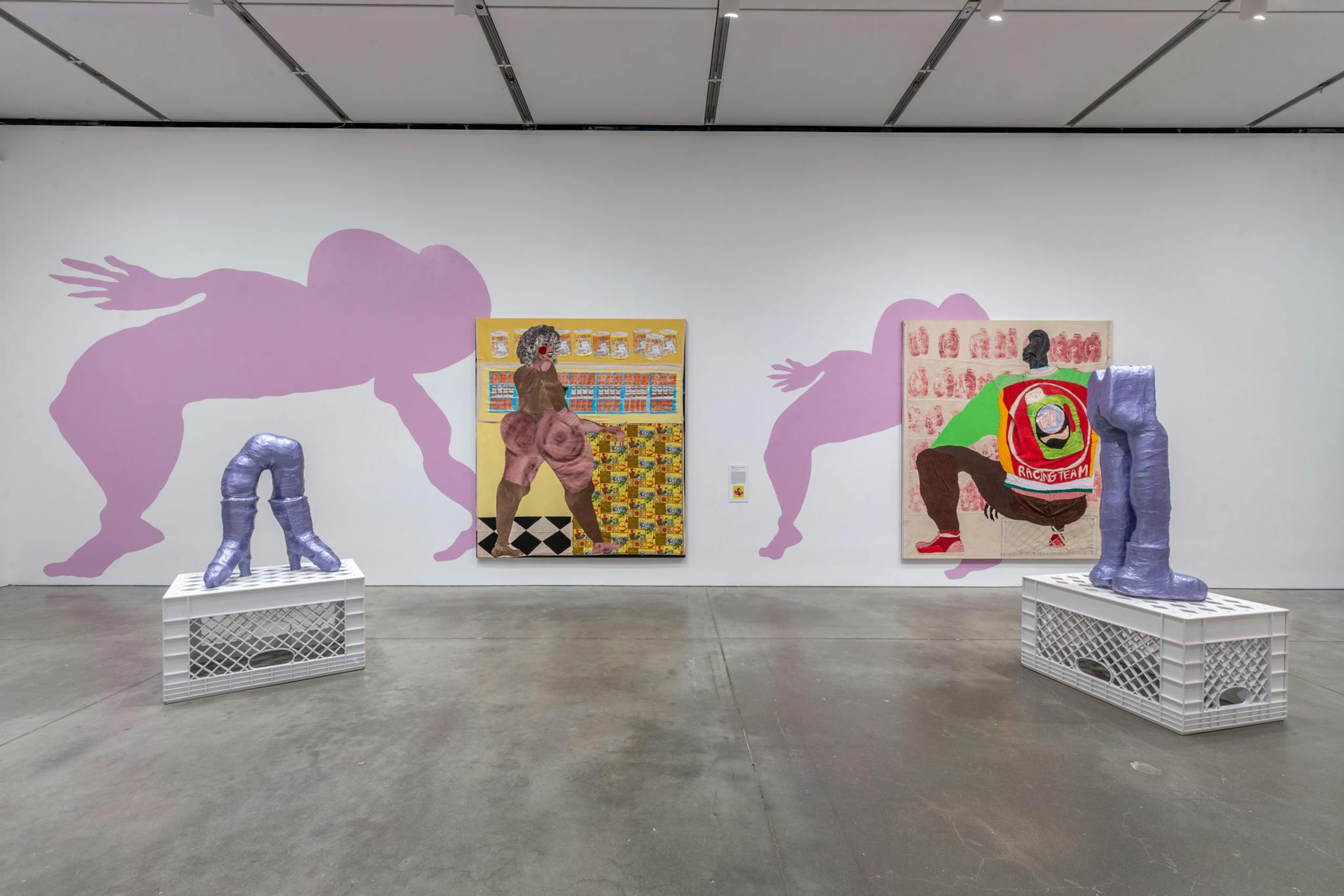Tschabalala Self’s recent show at the ICA/Boston, “Tschabalala Self: Out of Body,” was one of this year’s most hotly anticipated museum surveys. Spanning three galleries of the museum, the show looked at the thirty-year-old artist’s already illustrious career to date. Best known for her figurative, collaged paintings that explore the Black female body, “Out of Body” also incorporated Self’s foray into a new medium: sculpture. The museum show featured sculptures made from textiles (a favored material of Self’s), but in her studio, she’s been experimenting with bronze casting, marking a turn from soft sculpture to a medium much more enduring and definite.
I caught up with Self back in February, just a couple weeks after the ICA show had opened (and long before it prematurely closed due to the coronavirus pandemic). Self, who took my call from her studio in New Haven, Connecticut, spoke very quietly, but also very quickly and with palpable confidence. I was reminded of that old political adage: “Speak softly and carry a big stick; you will go far.” Already, her work exists in prominent collections, she’s set and reset her auction record within the span of a year, and she’s been celebrated by critics and art lovers alike, thus proving that adage to be true. Well, at least within the arts.
This interview was originally published in Issue 05: No Boundaries and is being made available online on occasion of the ICA’s reopening on July 16, 2020.
____________________________________________________________________
Annie Armstrong: So the ICA show has been up for several weeks now. How have you been feeling about it?
Tschabalala Self: I’ve been feeling great about it. I think that it’s been getting a great response from the public and I’m just really thankful to have my work in such a public institution like the ICA.
AA: I think of ICA/Boston as one of the prettier museums I’ve been to. Did preparing work for this show allow you to reflect on your career as an artist thus far?
TS: Oh, it’s so beautiful. I was happy I was able to be there for so long, just kind of take the install slowly, and do everything bit by bit. I feel like this show is really trying to give audiences insight into what my practice is doing at this moment. There are definitely some pieces that are there to kind of reference my process and reference my development thus far. But the work is totally steeped in what’s going on in my practice at this moment.
AA: When all was said and done and everything was finally installed at the show, was there anything that surprised you about seeing your own work in such a spatially large institution like the ICA?
TS: I was really excited to see the relationship between the freestanding sculptural work and the paintings in the larger space. That was a really exciting moment for me. Oh, and the wall painting. I love to see the succession of the work, and the confusion as to: What are the ultimate grounds? What is the ultimate substrate of this body of work as an installation, as opposed to looking at them as discrete art objects? So, for those reasons, I think that the middle room [at the ICA] was definitely transformative for me. I think people underestimate how transformative these kinds of large-scale exhibitions are for the artists themselves because you’re able to see your work in a different context, you’re able to see a different relationship from one piece to the next. So yeah, that was a great moment.
AA: How do you think that’s going to influence you going forward, seeing that middle room?
TS: It’s going to allow me to continue to think about the works not as just these one-off pieces that exist independently of one another and really imagine them all as being within and from the same community. And them being from and within the same community, their meetings do have this cohesion.
AA: Right. Though I did read that you are starting to experiment in bronze casting, is that right? Are any of them in the show?
TS: No, they’re not, but the sculptures that are in the show are the, I guess, the original works. Those are works that are heading off to the foundry at this time. So those that are in the show are the kinds of works that are now just being reproduced in multiples through bronze casting.
AA: How’s it been to try new mediums?
TS: I mean, I’ve been doing a lot of experimentation with sculpture for the past couple of years. But now that I feel like the sculptures have reached a level of maturity and they have this ability to be freestanding, it felt like a good moment to cast them in a little bit more durable material, opposed to the more assemblage way in which they’ve been based thus far.
AA: Yeah, I kind of can’t think of a more opposite material from fabric than bronze.
TS: Yeah, that’s true actually!


